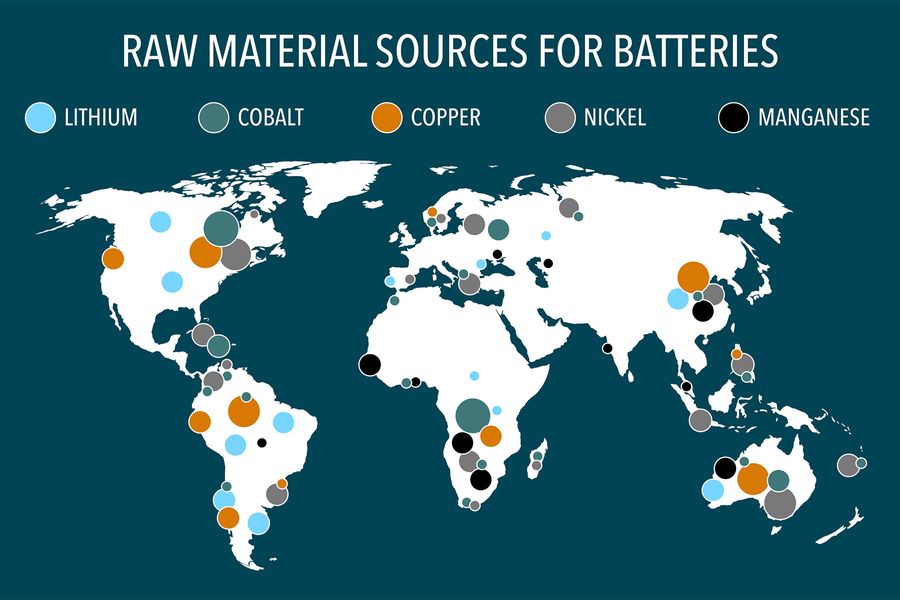
The global shift towards renewable energy and electrification has fueled an exponential demand for battery metals. These essential elements, including lithium, cobalt, nickel, and graphite, are the backbone of rechargeable batteries used in electric vehicles (EVs) and renewable energy storage systems. As the world seeks to reduce carbon emissions and transition away from fossil fuels, understanding the dynamics and challenges of battery metals supply chains becomes crucial.
Battery metals supply chains involve a complex network of processes, from mining and refining to battery manufacturing and recycling.
Mining: Battery metals are primarily sourced through mining operations globally. Lithium, for example, is extracted from lithium-rich brines or hard rock deposits, while cobalt and nickel are often obtained as byproducts of copper and nickel mining. Graphite, another key component, is mainly mined from natural graphite deposits.
Refining and Processing: Once mined, battery metals go through refining and processing to remove impurities and enhance their quality. This step is crucial to meet the stringent specifications required for battery production.
Battery Manufacturing: Battery production involves combining battery metals with other materials, such as electrolytes and separators, to create rechargeable battery cells. This step typically takes place in specialized manufacturing facilities.
Recycling: To ensure sustainability and minimize environmental impact, the recycling of used batteries is gaining importance. Recycling facilities extract valuable battery metals, reducing the need for primary mining and promoting a circular economy.
Battery metals supply chains face several challenges and sustainability concerns:
Supply Concentration: The majority of battery metals production is concentrated in a few countries, leading to potential supply chain vulnerabilities. For instance, a significant portion of cobalt production comes from the Democratic Republic of Congo, raising concerns about ethical sourcing and human rights.
Environmental Impact: Mining and refining processes can have adverse environmental consequences, such as deforestation, water pollution, and carbon emissions. Sustainable mining practices, responsible sourcing, and efficient recycling are necessary to mitigate these impacts.
Price Volatility: Battery metals are subject to price volatility due to fluctuating demand, geopolitical factors, and supply chain disruptions. This can pose challenges for battery manufacturers and impact the cost of EVs and energy storage systems.
Technological Advances: Continuous innovation and technological advancements are needed to optimize mining, processing, and recycling methods, making them more efficient and environmentally friendly.
The future of battery metals supply chains holds immense potential for growth and transformation:
Diversification of Sources: Efforts are being made to diversify the sources of battery metals to reduce supply chain risks. Exploration for new deposits, particularly in regions with emerging mining industries, is underway to meet the increasing demand.
Sustainable Mining Practices: Mining companies are increasingly adopting sustainable practices to minimize environmental impact. This includes using renewable energy in operations, implementing water management strategies, and restoring mined areas.
Recycling and Circular Economy: As the number of batteries reaching the end of their lifecycle grows, the establishment of robust recycling infrastructure becomes crucial. Recovering battery metals from recycling not only reduces reliance on primary mining but also reduces waste and environmental pollution.
Material Innovations: Researchers are exploring alternatives to traditional battery metals and developing new materials with enhanced performance, sustainability, and reduced reliance on critical resources.
Battery metals supply chains are the backbone of the green revolution, enabling the widespread adoption of electric vehicles and renewable energy storage. While challenges related to sustainability and supply chain vulnerabilities exist, ongoing efforts to diversify sources, implement sustainable practices and a focus on recycling must be a focus.



